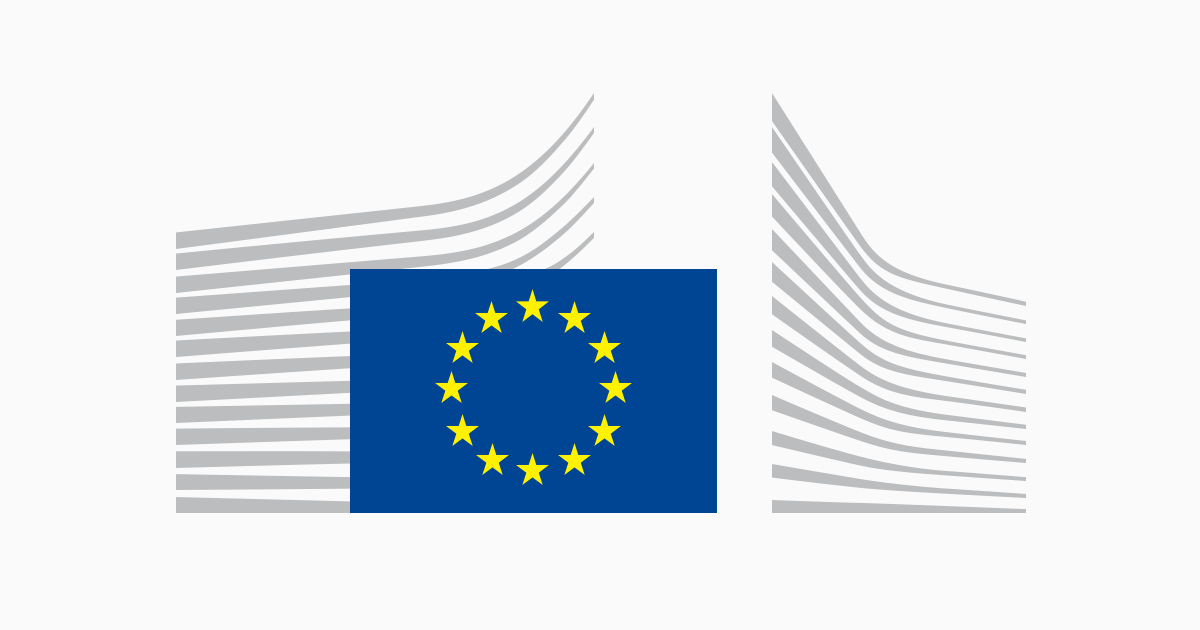SFDR Regulation Updates: Sustainability in Finance
Comprehensive guide on SFDR Regulation updates: Key to sustainability in finance, aligning with ESG goals, and supporting EU's net-zero CO2 ambition by 2050. Highlights strategic adjustments in financial institutions, investment shifts, and compliance strategies for a sustainable future.

A set of guidelines called the EU Sustainable Finance Disclosure Regulation (SFDR) aims to improve the sustainability profile of investment funds' transparency [1]. These policies' primary goal is to make it easier for end investors to compare and comprehend sustainability risks [1]. Financial advisors and participants in the financial markets are required by the SFDR to disclose how they incorporate sustainability risks into their advisory and investing decisions [1]. In addition, the legislation requires information on remuneration policies relating to sustainability to be provided, as well as the reporting of any unfavorable sustainability implications of investment decisions [1]. These improvements are essential for encouraging sustainability in the financial sector and guaranteeing ethical and open investment procedures. [1][2].
Source
[1]

[2]

Introduction to the SFDR Regulation
A key component of the European Union's all-encompassing plan to integrate sustainability and transparency into the financial industry is the Sustainable Finance Disclosure Regulation (SFDR). The SFDR was created as a major regulatory framework and is crucial in directing funding toward projects that are socially and environmentally appropriate. In order to realize the EU's ambitious goal of having net-zero carbon dioxide emissions by 2050—a milestone that highlights the region's commitment to battling climate change and fostering sustainable growth—this strategic approach is essential.
On December 4, 2023, the SFDR witnessed a landmark update with the introduction of significant enhancements to its Level 2 Regulatory Technical Standards (RTS), as announced by the European Supervisory Authorities (ESAs). This update marks a pivotal moment in the evolution of the SFDR, reinforcing the regulation through the integration of advanced social metrics, the refinement of Principal Adverse Impact (PAI) indicators, the clarification of guidelines for sustainable investments, and the optimisation of disclosure processes. These enhancements are designed to provide a more robust framework for the integration of environmental, social, and governance (ESG) considerations into financial disclosures and operations.
By improving financial market players' alignment with ESG goals, the strategic update to the SFDR law seeks to ensure a more thorough and in-depth approach to sustainability. The rule facilitates better informed decision-making processes by providing clearer paths for identifying and evaluating the sustainability of investments through the introduction of new measures and indicators. This is especially important in light of the EU's larger sustainability strategy, as financial institutions are essential in directing funding toward programs and projects that support social justice, environmental preservation, and sound governance.
It is impossible to exaggerate the significance of these upgrades. They represent not just a significant development in the legal environment for sustainable finance but also a resounding declaration from the EU that it will set the standard for global efforts to promote a more transparent and sustainable financial system. The SFDR has the potential to bring about a substantial change in the financial markets by elevating the bar for sustainability reporting and investment criteria. This will allow for a greater emphasis on long-term environmental and social value rather than short-term profits.
SFDR Regulation: Empowering ESG Integration with Strategic Updates
The revisions to the Sustainable Finance Disclosure Regulation (SFDR) are a major advancement in the financial sector's integration of Environmental, Social, and Governance (ESG) issues.
Expanding Social PAI Indicators for Comprehensive Social Responsibility
- Required Inclusion: The revisions require that important social Principal Adverse Impact (PAI) indicators be included. This guarantees a thorough evaluation of the social effects, encompassing activities in tax-evading jurisdictions and participation in the tobacco industry.
- Addressing Social Issues: The SFDR encourages greater equity and fairness within the financial sector by addressing issues like gender pay inequalities and inadequate wages.
- Optional Trade Union Activity Indicator: Provides an avenue for entities to report on "low collective bargaining coverage," thereby drawing attention to a neglected area of social responsibility.
- Standardized Assessment: With an emphasis on greenhouse gas intensity and CO2 emissions in particular, the changes standardize the assessment of environmental impacts. This guarantees reporting's accuracy and comparability.
- Clear Differentiation: These changes are intended to improve the dependability of environmental impact assessments by offering guidance for distinguishing between direct, company-reported data and estimated estimates.
Simplified Dashboards for Pre-contractual Disclosures
- Simplified Information: Investors can make better decisions by using simplified dashboards that give a brief summary of the sustainability features of financial products.
- Encouraging Informed Decisions: By making SFDR-compliant information more accessible and understandable for investors, this update hopes to promote investments in sustainable financial products.
- Increased Transparency: Financial products can now choose the best approach to determine the percentage of sustainable investments. This method enhances the communication and transparency of a product's sustainability credentials.
- Better Methodology: This upgrade makes it easier to depict the sustainability of financial products more accurately, which helps investors make decisions based on how financial products will affect the environment and society.
Standardizing Greenhouse Gas Emissions Reduction Disclosures
- Comparability and Monitoring: This program intends to enhance the tracking and comparison of activities throughout the financial industry by establishing uniform rules for emissions reduction target reporting.
- Encouraging Accountability: By guaranteeing that financial institutions and their offerings are open and honest about their environmental impact, this standardization will help the international community fight climate change.

Optimising Financial Practices for Enhanced SFDR Compliance
Adapting Financial Institutions to the SFDR Enhancements
The Sustainable Finance Disclosure Regulation (SFDR) has undergone significant revisions, and financial institutions throughout the European Union must now reevaluate and realign their operational and strategic strategies. The SFDR amendment, which aims to integrate sustainability into the financial sector more deeply, requires these institutions to respond in a proactive and strategic manner. Financial companies are encouraged to make a number of strategic modifications in order to put themselves at the forefront of sustainable finance and effectively traverse this regulatory evolution.
Embracing Sustainable Investment Opportunities: Financial institutions now have a strong motivation to add more sustainable investment options to their portfolios in order to diversify them. This change satisfies investor desire for more environmentally and socially conscious investing options in addition to meeting regulatory requirements. Institutions can improve their market competitiveness and help achieve global sustainability goals by proactively identifying and funding green and sustainable activities.
Mitigating Risks from Non-Sustainable Investments: Reducing exposure to sectors and businesses that the revised SFDR standards deem unsustainable is another crucial strategic change. To reduce potential regulatory and reputational risks connected with non-compliant investments, this calls for a thorough evaluation and, if necessary, a redesign of current investment portfolios. Establishments are urged to create strong risk assessment and management frameworks that are adapted to the specifics of sustainable investing.
Elevating Disclosure and Reporting Standards: The significance of clarity and openness in sustainability-related financial reporting is emphasized by the SFDR changes. To comply with the new regulations, financial institutions must improve their disclosure policies and make sure that stakeholders are informed of all pertinent information in an accurate and thorough manner. This covers thorough reporting on the sustainability features of financial goods as well as the overall environmental and social effect of the organization.
Strengthening Internal Expertise on SFDR Compliance: A smooth implementation of the amended SFDR regulations depends on staff members being informed about its subtleties and ramifications. In order to develop internal expertise on sustainable finance and regulatory compliance, financial institutions should invest in training programs and resources. A knowledgeable staff is better able to assist the institution in achieving its sustainability goals, effectively guide clients, and adjust to changes in regulations.
Fostering Engagement with Stakeholders: It is essential to have an honest and ongoing discussion about the consequences of the SFDR revisions with investors, clients, and other stakeholders. Financial firms should talk about how the regulatory changes affect investment products, strategies, and overall sustainability goals by using transparent communication techniques. By involving stakeholders in this way, expectations are aligned and confidence is maintained, which makes the transition to the improved regulatory framework easier.
Implementation Timeline and Scope
Financial institutions are entering a crucial stage as they await the European Commission's assessment and decision-making process over the suggested SFDR adjustments throughout the next three months. This time frame, which is followed by a predetermined transitional phase, is intended to give entities enough time to adjust to the new regulations. Institutions must make the most of this period by making sure that any necessary modifications are well planned and carried out.
The SFDR updates cover a wide range of the financial industry in the EU, including banks, mutual funds, asset management firms, FinTech companies, and so on. This broad effect emphasizes the significance of a coordinated and planned approach to compliance and the part the regulation plays in creating a more sustainable financial environment.

Sustainable Financial Horizon: Role of SFDR Regulation Enhancements
In the European Union's continuous effort to develop a financial ecosystem that is not only strong and transparent but also inherently sustainable, the most recent revisions to the Sustainable Finance Disclosure Regulation (SFDR) mark an important turning point. These changes demonstrate the European Union's steadfast commitment to establishing new standards for investing practices, financial reporting, and the larger goal of sustainable development. The Sustainable Finance and Development Report (SFDR) is a transformative tool for financial decision-making, since it sets more stringent reporting requirements and provides practical, workable guidance for sustainable investments.
A Resource for Stakeholders: Beyond Compliance to Strategic Engagement
All parties involved in the financial industry, from asset managers to institutional investors, will find this guide to be an indispensable resource. Its goal is to provide these players with a thorough understanding of the revised regulatory framework of the SFDR, highlighting not only the details of compliance but also the strategic potential these changes bring. Understanding and putting the SFDR's requirements into practice become more than just a matter of complying with regulations; they are also a strategic necessity for the financial industry's continued success as it embraces sustainability as a fundamental tenet.
The Evolving Role of Financial Institutions in a Sustainable Economy
Financial institutions are clearly under pressure to integrate their business practices, investment strategies, and corporate values with the sustainability ideals that the SFDR promotes. In order to achieve this alignment, investment portfolios must be thoroughly reviewed, interactions with non-sustainable industries must be reevaluated, and companies must pledge to advance sustainability in all facets of their company operations. These organizations support the environmental and social objectives of the EU and establish themselves as leaders in the shift to a sustainable economy as they adopt and adhere to the SFDR's requirements.
A Call to Action for Sustainable Progress
All things considered, the modifications to the SFDR regulations represent more than just a change to a set of rules; they are an urgent appeal to the financial industry and its allies to take the lead in advancing a sustainable future. Financial institutions have the chance to play a significant role in advancing the global sustainability agenda, bringing about positive change, and cultivating a legacy of social responsibility and environmental stewardship by upholding and advocating for these standards. As we go, an institution's commitment to comprehending and putting the SFDR's standards into practice will not only be a sign of conformity but also a gauge of its commitment to creating a sustainable future for all.
Reduce your
compliance risks



